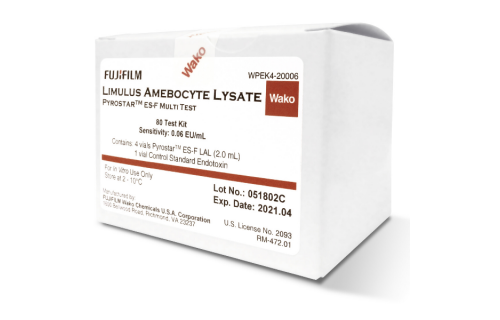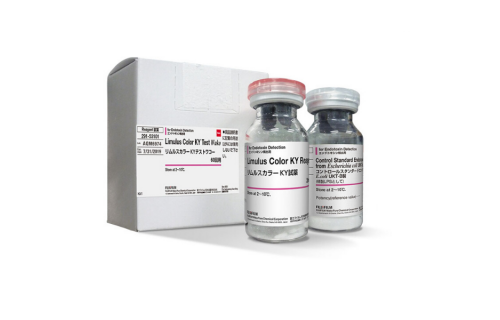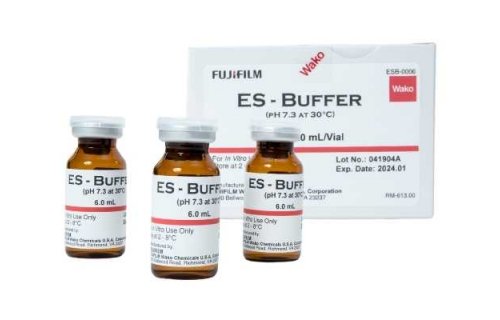Specific and reliable endotoxin detection using the PYROSTAR ES-F Limulus amebocyte lysate (LAL) reagents
Even minute amounts of endotoxin cause inflammation, fever, and tissue damage, when injected or implanted in humans, and may lead to sepsis and even death. Endotoxins are an integral component of the outer membrane of gram-negative bacteria and are thus ubiquitous in the environment. To prevent the potential severely deleterious effects of parenteral endotoxin administration, endotoxin testing has been introduced as a critical step in the development and quality control of biopharmaceutical products and medical devices. The Limulus amebocyte lysate (LAL) assay is the most widely established method for endotoxin detection. Its utility has been proven both in numerous studies and in the practice. However, the LAL assay is also associated with challenges, including the risk of false-positive and false-negative results.1 These LAL test limitations have important practical implications, because both false-positive and false-negative test results are highly likely to lead to misinterpretation of the findings and to interfere with proper patient care.2
The development of Wako’s PYROSTAR ES-F LAL reagents for endotoxin detection represents a major advancement with regards to the reliable and specific detection of bacterial endotoxins by reducing the rates of false-positive and false-negative LAL test results. The PYROSTAR ES-F LAL reagents can be used for both qualitative and quantitative endotoxin detection using a gel-clot or a kinetic turbidimetric method, respectively.
Reduction of the false-positive LAL test rate via the inclusion of carboxymethylated curdlan (CMC) in the ES-F Buffer
False-positive results obtained in the LAL assay may be caused by contamination with fungal and cellulose products containing (1,3)-beta-D-glucan.1,3 Notably, (1,3)-beta-D-glucan and endotoxins induce clot formation in the LAL assay via two distinct pathways. (1,3)-beta-D-glucan stimulates clot formation via the activation of factor G, leading to a false-positive result. However, endotoxins stimulate clot formation via activation of factor C, which in turn activates the coagulation factor B. Notably, (1,3)-beta-D-glucan is harmless in the low concentrations that cause false-positive results in the LAL assay, even though it may exert harmful effects in high concentrations.
The ES-F buffer reduces the rate of false-positive results in the LAL assay via the addition of high concentration of carboxymethylated curdlan (CMC). CMC is closely related to (1,3)-beta-D-glucan and interacts with factor G but does not activate it. This interaction, in turn, prevents the activation of factor G by (1,3)-beta-D-glucan. Initially, Wako PYROSTAR developed the CMC-containing ES buffer, which renders the LAL reagent endotoxin-specific when used for its reconstitution. Subsequently, the Wako PYROSTAR ES-F Buffer formulation was introduced, which contains co-lyophilized CMC and LAL, further optimizing the convenience and ease of reagent use.
Reduction of the rate of false-negative and false-positive results in the LAL assay via the ES-F buffering properties
Notably, the PYROSTAR ES-F buffer also decreases the rate of false-positive and false-negative results induced by pH deviations via its buffering properties. The LAL reagents perform properly only in a neutral environment, because an acidic or basic environment may cause both false-negative and false-positive findings. Both acids and bases can denature and inactivate the factors involved in the LAL assay, leading to false-negative results. However, even a mildly acidic (pH 6) or basic (pH 8) environment has also been associated with an increased false-positive rate compared to a neutral (pH 7) environment.4 The ES-F buffer uses Tris as a buffering component, which neutralizes both acids and bases, resiliently maintaining the optimal pH range of the reagent mixture and decreasing the rate of false-negative and false-positive findings in the LAL assay.
PYROSTAR ES-F LAL reagents as a highly reliable and specific method for LAL testing
Reliable and specific endotoxin testing is key to ensure the safety of biopharmaceutical products and medical devices. The development of the ES-F Buffer as a component of the PYROSTAR ES-F LAL reagents greatly reduces the rates of false-positive and false-negative results in the LAL assay, creating an incredibly specific LAL reagent and promoting patient safety.
Literature sources
- Nalepka JL, Greenfield EM. Detection of bacterial endotoxin in human tissues. Biotechniques. 2004;37(3):413–417. https://doi.org/10.2144/04373ST06
- Jackson BR. The dangers of false-positive and false-negative test results: false-positive results as a function of pretest probability. Clin Lab Med. 2008;28(2):305–319. doi: 10.1016/j.cll.2007.12.009.
- Anderson J, Eller M, Finkelman M, Birx D, Schlesinger-Frankel S, Marovich M. False positive endotoxin results in a DC product caused by (1-->3)-beta-D-glucans acquired from a sterilizing cellulose filter. Cytotherapy. 2002;4(6):557–559. doi: 10.1080/146532402761624728.
- Lourenço FR, Botelho Tde S, Pinto Tde J. How pH, temperature, and time of incubation affect false-positive responses and uncertainty of the LAL gel-clot test. PDA J Pharm Sci Technol. 2012;66(6):542–546. doi: 10.5731/pdajpst.2012.00887.






